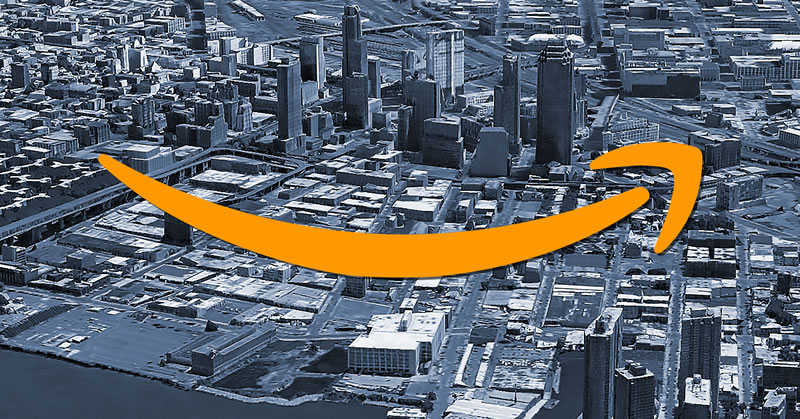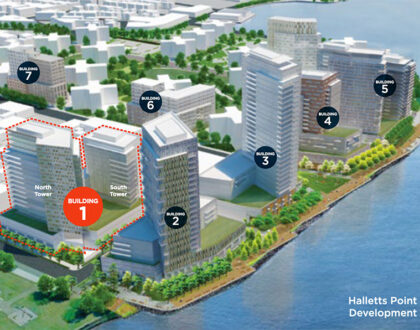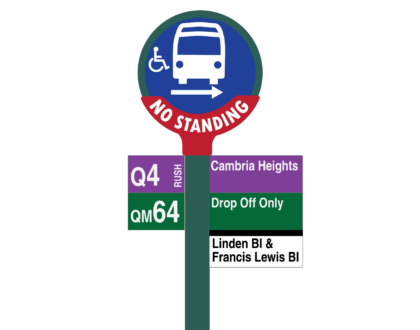OANA Amazon Loss Press Release

The Old Astoria Neighborhood Association was privileged to be directly involved in the Amazon HQ2 process.
We regret that Western Queens has lost this opportunity for economic development. We hope that in the future the issues that divide us will be dealt with in a positive fashion, so all New Yorkers can continue to enjoy our a positive quality of life in our great city.
We have put together a Press Release on our observations of the process. This was a great Learning Experience for everyone, and we trust that the lessons learned will bode well for our future.
PRESS RELEASE
![]() February 14th, 2019
February 14th, 2019
Amazon HQ2: A Look Back and Ahead
The Old Astoria Neighborhood Association is sorely disappointed in the demise of Amazon HQ2 in Long Island City. As a non-profit civic organization, one of our missions is to promote a healthy economy for Western Queens. We were privileged to be named by New York City and State to the HQ2 Community Advisory Committee and the Community Partners Committee.
Amazon HQ2 would have been one of the greatest catalysts for our economic health in the last 150 years, anchoring a growing tech sector that could support the city for the foreseeable future. The Industrial Revolution of 150 years ago led to the creation of the world’s greatest financial sector, which has fueled the New York economy since. But we need to diversify.
That being said: We are optimistic about the future. There is a reason why Amazon chose LIC in the first place. The factors of location, logistics, a strong work ethic, an extraordinary talent pool, and the lure of the New York City lifestyle will still serve us well. Hundreds of start-ups, small and mid-sized companies are coming to LIC/Astoria and the future is bright.
There are clouds on the horizon. We need to address the legitimate quality of life and cost of living issues we all face. But looking backwards will not solve the situation—it will only make it worse. We must ensure that the business community perceives our neighborhood as friendly to business and growth. This is the only way we can generate the income needed to address those quality of life and cost of living issues.
We need to make sure that “New York Exceptionalism” does not blind us to the fact we need to be competitive with the rest of the world. We cannot consume more than we create and expect to remain an “Exceptional” city. We hope the political rhetoric that poisoned the Amazon deal will soon become a thing of the past.
Why Does NYC need to diversify our economy?
A diverse economy is a healthy economy. New York City currently derives most of its income from the Financial Sector. Last year’s inconsistent Wall Street revenues have led to a shortfall in this year’s tax revenues. It is imperative that we develop a more diverse economic base. The obvious sector would be tech. The LIC area has long been envisioned as such a district, especially since the advent of Cornell Tech. Local development organizations have made this a top priority for years.
We could have had this anchor company in Amazon: This could have led to a tremendous growth in the sector, essential for a healthy NYC. No recent event is more negative to LIC/Astoria than losing the HQ2. It could make all large tech institutions question why they would come to LIC, when the rest of the country would welcome them. It could become quite difficult to attract other tech companies, which would not bode well for the future of NYC.
The Media Effect
OANA became active in this discussion because we noticed that almost all the media was promoting the rhetoric of the Anti-Amazon activists and politicians. This was especially true in the first month after the initial announcement. There was little positive about the deal from any source. We decided to create a press release on our position, which stated we supported the HQ2 as long as certain common-sense conditions were addressed.
However, not one media outlet, from the NY Times to our local neighborhood publication, whether print or digital, chose to publish our release. We did self-release it on social media. We were able to get an op-ed out, but we have had to rely mostly on social media. This media bias started to encourage those undecided local politicians to ride the anti-Amazon wave, because that’s where all the media play was taking place. The real effect was to grossly inflate the influence of the naysayers, so it seemed that they were the vast majority in New York City, even though we know by all polling done that they were in fact a minority.
OANA is a supporter of an independent press and the media, but we reserve the right to call them out when needed. If a truly impartial debate had taken place from the beginning, we feel we would still be looking forward to the 25-40,000 jobs that would have guaranteed our economic health.
Finally, since we still live in a democracy, the final say on the demise of the Amazon HQ2 will reside with the voters in the 2020 election. This election will determine our path forward. We must make sure the Amazon HQ2 issue is kept in the forefront and is not forgotten.
Our citizens know what is healthy for New York, and they should support those who promote a diverse economy, embrace growth and innovation, jobs, along with a responsible government that will compliment, not hinder these goals. We cannot be left in the dust by the rest of the country and world. New York has been the greatest city in the world by looking ahead with optimism, not fear.
During our Community Outreach Process, many questions came up: Following are some of those questions and OANA’s responses. These were written while the HQ2 agreement was still active.
Where will Amazon employees live and how will this affect transit?
It is part of Amazon’s culture to encourage its employees to live within walking or biking distance. This is the case in Seattle. One reason Amazon has chosen LIC is the availability of new housing within walking or biking distance.
One may ask then, why promote the BQX street trolley, as it will be built to facilitate transit north and south of the campus? You have to consider before the BQX may be built the employees will opt to stay close by the campus. They would only venture out after an alternative to the current buses and subway is up and running. So, it should not have an effect on the subways and buses.
Lastly, and most important: having the mixed-use commercial space primarily staffed by people walking or biking to work will take considerable strain off of the subway/bus transit system.
What about the strain on the power grid and sewer system?
We are asking that any buildings constructed, either commercial or residential, have on-site green power generation and grey water sewage treatment. This means that, if instituted, they will have no additional negative effect. In addition, we fully expect that Amazon will contribute to a fund to deal with the existing infrastructure issues. This is to their advantage, as the local quality of life will have direct effect on their ability to attract the best and brightest employees.
Why is mixed-use (commercial and residential) important?
In today’s urban environment, such mixed-use neighborhoods are being promoted as the solution to many transit and environmental issues. Their footprint is significantly less if commuting is no longer an issue. Also, many in our younger generation like the fact that they can live and work in the same complex, even the same building.
Historically, LIC was an important commercial and manufacturing center for all of New York. We do not want to completely lose this aspect of our local character, which is why this area was zoned mixed use in the first place.
What about the $3 billion?
First: This should be viewed in an investment by the city and state in the economic prosperity of LIC/Astoria. There will be a significant financial return on investment (projected to be 900% in 10 years). This return on investment should help to alleviate many the of the infrastructure and quality of life issues we currently have. And it should be emphasized that this investment (of tax abatements, not cash) will not be paid until AFTER the actual jobs are created, so there is no risk to New York.
For those who think that the $3 billion can be diverted to other needs, such as transit and housing, this is not true. This money is only available if Amazon comes to NY. It is generated by the tax revenues they would create.
Also, think of it this way: If you invested $3000 in a secure, successful blue-chip company and received a 900% return in 10 years, and in addition you did not have to invest the capital until after the stock has gone up, you would be considered a master investor! In a nutshell this is how the government’s investment in Amazon is structured!
Lastly, the reason for the large sum of $3 billion is because of the extraordinary amount of jobs being created. 1.4 billion of the investment is “as of right” and was not created specifically for Amazon. The “as of right” investments by the city continue to be important to outer borough development for the same reasons they were always important in Manhattan (expanding economic activity, bringing jobs closer to workers to reduce reliance on transit, and improve quality of life).
How can Amazon take over the Citicorp tower?
Citicorp is downsizing, and we are lucky to have a replacement available.
Why did we have to offer an investment in Amazon in the first place?
When trying to negotiate economic opportunity such as the Amazon HQ2, many municipalities make offers of investment in order to win the bid. As a matter of fact, the LIC $3 Billion-dollar investment was significantly less than what many other cities offered.
We have to be competitive in order to secure the economic future of our citizens.
If there was a way to stop every municipality from offering the investments, so we have a level playing field, then perhaps the investments could be avoided. But this is not the case.
Why should we support a company that has a negative reputation in employment practices?
Simply put, by not letting Amazon establish a facility in NY, we are losing whatever leverage we may have in advocating for any changes. Because Amazon has over 200 municipalities who would love to have this facility, there is no chance that our refusal of the HQ2 could affect any changes on their culture. We do believe, however, that the priority of any organization should be servicing clients. (Note that OANA has not taken any position on Amazon’s current employment practices. We would want to see them in practice in NYC). And we should also remember that Amazon has promised to fund an aggressive workforce development program, focused on Western Queens.
Why shouldn’t we insist in a closed union shop?
While OANA supports unions, we do not feel that it is the place of Government to take sides in any union/Private sector management disputes. Optimally, we look for both to work together for everyone’s common interest. We do believe that Prevailing Wage (available to all workers, union or not), may have a place.
What about Amazon’s refusal to sign a Neutrality Agreement with Unions?
The definition of Neutrality Agreement is “Contract between Union and Employer that the Employer agrees to support a union’s attempt to organize” Obviously what employer would ever agree to this. They would never give up an opportunity to present their side of an issue, nor should they. There is nothing “Neutral” about this agreement. True neutrality would involve both parties advocating for their positions, then a vote taken by a truly informed electorate. Amazon did commit to following all fair labor laws, which would guarantee a vote and protect employees right to organize. The only reason a union would insist on this “Neutrality Agreement” would be if they felt vulnerable and would not be able to win on the merits of their arguments.
What about gentrification?
This is primarily a function of government. We have affordable and low-income programs in place. However, they do need to be sensitized to the local population. Seattle did not have these programs in place, and when the unanticipated growth took place, gentrification became a huge issue. In NYC, we have programs in place that properly administered can alleviate many of these issues.
Also, streamlining is important. If costs are reduced to construct it is possible to create more affordable housing. But delays caused by government agencies prioritizing fines, suspensions, zoning issues, etc., increases builders’ costs to the point that affordable or low-income housing does not make economic sense, regardless of government incentives. In addition, inter-agency communications must be greatly improved to avoid both delays and duplication of requirements. If the goal of these agencies was just safety, and not income generation for the city, then before they fined businesses for violations, they would give them a grace period to fix the problem.
Lastly, property taxes must be controlled so that landlords have time to adjust their cash flow to make up for increased assessments. Currently the rest of New York State enjoys much more aggressive caps on the annual increase on property taxes than the five boroughs do. We should all enjoy the same benefits. Also, keep in mind that whenever possible, a landlord will pass along property tax increases to their tenants.
The anti-gentrification activists are actually working against the interests of the all renters! They advocate for very limited creation of new housing, wanting to keep the status quo. But since we still live in a capitalist society, this would inflate pricing for apartments since supply would not keep up with demand. Some actually advocate for stopping all development, which is counter-productive. As an example, the West Village has been able to stop almost all development: this has led to it becoming one of the most expensive rental markets in the city.
What about the disruption to local retail because of Amazon’s business model?
This is a macro issue that cannot be solved by refusing the jobs being offered locally by HQ2.
Amazon has offered a product that many people find more convenient than local retail. This is a significant economic disruption. However, this is a reality today. Probably through economic trial and error, brick and mortar stores will find their place.
However, we are lucky. We also have lost many jobs in our retail sector locally, but at least with Amazon locating here we will be able to replace them. Other cities wish they had our opportunity. This may be a bit selfish, but OANA’s mandate is to promote economic health locally.
We have also requested that Amazon invest in new entrepreneurial starts-up, both financially and mentoring, especially in the retail sector. Hopefully they can create a business model for retail that can alleviate the disruption that currently afflicts the brick and mortar stores.
Lastly, local business will prosper with the increased economic activity brought on by the Amazon HQ2 project.
Why was the deal made in private and the City’s Land Use Process (ULURP) avoided?
While we agree that the agreement process was not transparent, and needs to be improved, we are directly involved in the Community Advisory Committee in order to advocate for local quality of life issues. We fully expect our input to be seriously considered.
However, keep in mind that the city’s land use procedure is not the most democratic. It is controlled by the local city councilman. Normally they provide the terms of the deal, and have a veto power. The community board is only advisory (like the Amazon CAC we are involved with) and even City Planning and the Borough President can often be overruled by the local councilman.
So, whether it is the Governor and Mayor, or the local Councilman, the end result is not that different. The one major difference we see is the process through the state seemed to take less time. And one of the unspoken reasons for the City Council’s anti-Amazon stance is to protect their own power and self -interest. They do not like the precedent of the state taking their power. But this has led to the Council taking positions contrary to the wishes of the vast majority of constituents they represent (as confirmed in all polls taken). Download the Amazon Loss Press Release.
Recommended Posts

Halletts Point Gets $135 Million Investment from Affinius Capital
February 18, 2025

Free Webinar: How to Grow an Audience on Social Media (Feb 19th)
February 16, 2025

Upcoming Changes to Queens Bus Stop Signs
February 16, 2025
